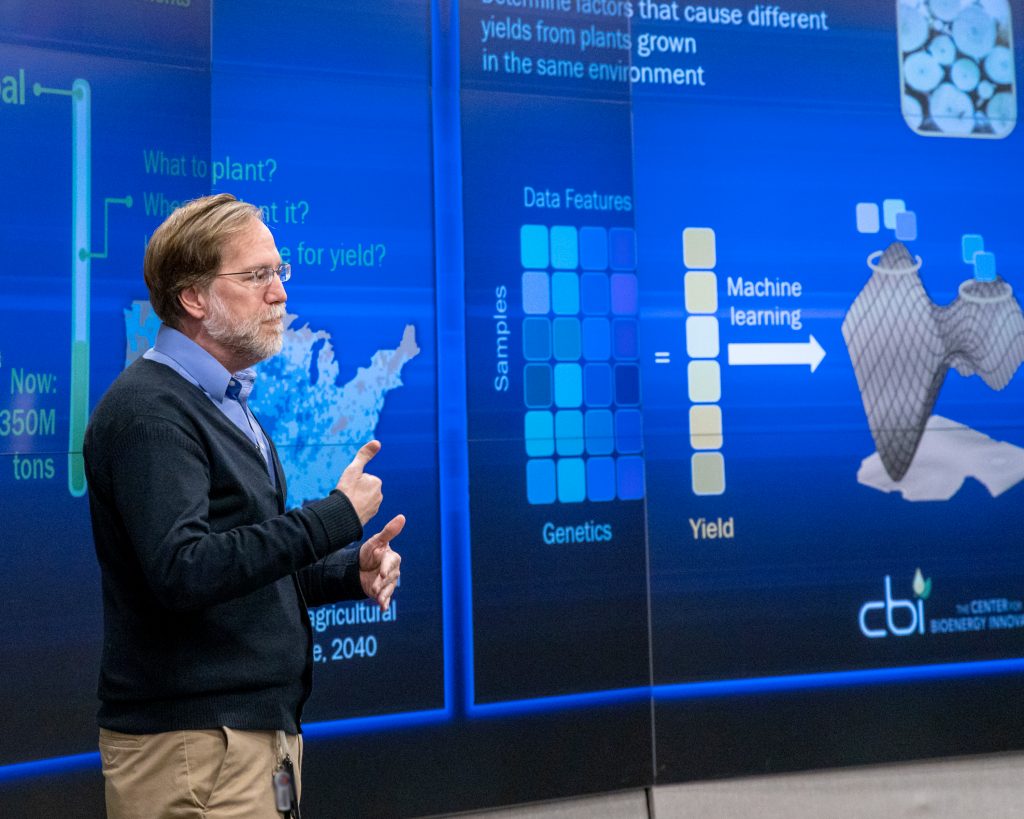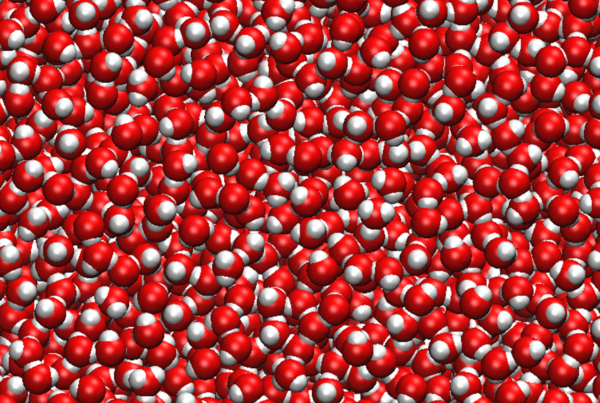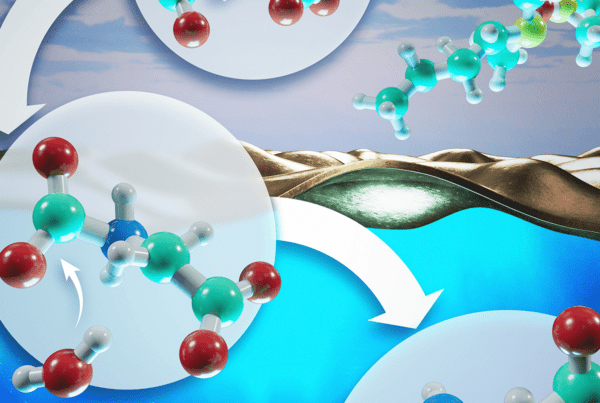In 2015, all member states of the United Nations pledged to pursue the 17 Sustainable Development Goals set forth by the UN General Assembly in its 2030 Agenda for Sustainable Development. The goals serve as a framework to tackle many of the world’s challenges, ranging from practical issues like infrastructure and economic growth to matters of human failure, such as gender equality and peace. All of the objectives are monumental tasks in themselves, but two stand out as demanding technological solutions: affordable energy and zero hunger.
According to the Global Report on Food Crises 2020 by the World Food Programme, an estimated 135 million people in 55 countries face acute hunger right now—and with the COVID-19 pandemic, that number may reach 265 million people by the end of the year. Meanwhile, the world population is expected to grow by 2 billion people to 9.7 billion by 2050, according to the UN’s World Population Prospects 2019. Combined with the effects of climate change, these trends present an existential challenge: Can the world’s agricultural industry adapt to our transforming environments to produce enough healthy crops to feed and power an ever-growing population?
There has been broad agreement in the plant-research community for the past 10 years that what’s needed is a new “green revolution” to supersede the one that advanced industrial farming in the mid-20th century when applications of fertilizers and pesticides, combined with plant genetics, drove big leaps in productivity, said Daniel Jacobson, a research and development staff member in the Biosciences Division at the US Department of Energy’s (DOE’s) Oak Ridge National Laboratory (ORNL).
In a recent piece published in Current Opinion in Biotechnology—cowritten with his team at ORNL and others at several different institutions—Jacobson proposes what he believes to be the quickest route to meeting some of those Sustainable Development Goals: explainable artificial intelligence driven by exascale computing power to develop crops for food and bioenergy that will thrive in new environments.
“It becomes clear if you look at the trends of energy use and population expansion and food consumption, we’re not going to keep up with the needs of society with current farming methods. So we need another Big Data approach,” Jacobson said. “The goal here is to actually feed and power the Earth without destroying the planet, because agriculture can be very energy intensive and can have big impacts on the environment. So we need to be able to design things not just for environments now but for environments of the future.”

Daniel Jacobson, a research and development staff member in the Biosciences Division at the US Department of Energy’s (DOE’s) Oak Ridge National Laboratory (ORNL). Photo: Carlos Jones/ORNL
Changes in the environment can affect agricultural productivity in a variety of ways as shifts in rainfall and temperature patterns bring about extreme heat, droughts, wildfires, or even heavy downpours and floods. Such long-term weather changes can also disrupt farms’ output by introducing new insects or weeds that now thrive in the changed environments.
Furthermore, the agricultural industry’s reliance on fertilizers and pesticides—which can also introduce their own problems, such as runoff into the water systems—may be insufficient to counter declining crop yields due to rising growing-season temperatures. Higher temperatures can cause a cascade of farming issues: increasing the rate and intensity of droughts, contributing to the depletion of soil carbon due to reduced biomass productivity during droughts, and raising evaporation rates, which exacerbates plant stress.
“Current state-of-the-art plant breeding may be too slow of a process to tackle these issues with the urgency that’s required,” Jacobson said.
“We need to break out of the paradigm of incremental breeding improvements—not just tweaking something and slowly working your way through generations and generations of breeding, but rather big steps of progress where you can make big jumps in sustainability and productivity all at the same time,” Jacobson said. “That’s the revolution that’s needed and that’s very much what we’re trying to target.”
So how can computational scientists use algorithms to breed new plants capable of thriving in future landscapes affected by global warming? That is a task Jacobson and others have been working on for the past several years with their groundbreaking Combinatorial Metrics [CoMet] genomics algorithm, deployed on the IBM AC922 Summit, located at the Oak Ridge Leadership Computing Facility (OLCF), a DOE Office of Science User Facility at ORNL.
In 2018, CoMet won the Association for Computing Machinery’s Gordon Bell Prize for being the fastest science application ever reported. On Summit, the team’s application achieved a peak throughput of 2.36 exaops—or 2.36 billion billion single precision calculations per second.
Exaops describe calculations—“ops”—performed at a lower level of precision than “flops,” or floating point operations per second, the traditional measure of computer performance. Breakthroughs in artificial intelligence and machine learning permit use of these lower-precision numbers. Whereas floating point operations require 64 bits to represent a single number with “double precision,” ops can involve calculations using “single-precision” and “half-precision” numbers represented by 32 and 16 bits, respectively.
In the years since the Gordon Bell Prize, Jacobson and his team have not only increased their application’s speed to 2.41 exaops but also added new capabilities to their toolkit: an AI-driven genomic selection algorithm.
With the new algorithm, this genomic selection approach can take into account all the biological data the community has gathered about populations of plants and their underlying genetics, as well as the outcomes of those genetics, and identify patterns—combinations of genetic variance in the genomes that lead to particular sets of outcomes. Because this is an “explainable AI” approach (rather than traditional AI, which delivers results without revealing its process), it shows how these combinations can be formed. This can lead scientists to breed specific plants for particular phenotype outcomes, like maximum yield, drought resistance, or disease resistance.
“And that’s actually a really challenging task—you’re trying to optimize multiple things all at the same time, and that requires a really deep understanding of both the environment and all the possible environments you could target, as well as a deep understanding of the systems biology of an organism,” Jacobson said.
To take into account environmental and climate variables at every point of land on the planet, Jacobson and his colleagues added an algorithm known as DUO to the CoMet package. At 1 square kilometer resolution, DUO has made comparisons between all 157 million places of dry land on the Earth, with vectors that represent their environments across the past 50 years. This allows scientists to cluster different points on the planet with similar environments, so they can target them for particular crops as well as project how those environments may change.
“It may well be that southern France and northern Spain, from an environmental point of view, look a lot like the Western Cape in South Africa. It turns out that when we do this climatological clustering with our datasets, we find that those two regions have very similar environments—and it so happens that wine grapes thrive in those areas,” Jacobson said. “So this gives us ways to not just look for geographic regions in one area but all over the world. What’s similar all over the world that we can design an organism to thrive in and get a sense of how that’s changing over time?”
Next year, Jacobson expects to attain even higher-fidelity insights using the OLCF’s incoming exascale machine, Frontier. With its predicted peak performance of 1.5 exaflops (compared with Summit’s 200 petaflops), Frontier will be able to handle increasingly complex algorithms in much shorter time.
“Frontier will make things possible that even on Summit probably just aren’t doable with the machine time they would require. So, absolutely, we need Frontier,” Jacobson said. “Summit has been a godsend—it’s allowing stuff we’ve been dreaming of for decades. But we’re looking forward to Frontier opening up horizons after a shorter wait period—from an entire lifetime to just a couple years.”
With bioenergy crop field trials underway as part of collaborations within the Center for Bioenergy Innovation as well as commercial partners, the findings being made by these approaches are not being produced just for the sake of research. The team’s ultimate objective is to put them into practice, which will also help address those Sustainable Development Goals.
“Sustainability, at the intersection of economic self-sufficiency and long-term environmental health, is a cornerstone of a viable bioeconomy,” said Jerry Tuskan, director of the Center for Bioenergy Innovation. “The use of AI approaches and tools moves us closer to realizing this vision.”
“We’re very aware of the need to deploy this into the real world, and there’s a number of activities we have in motion to figure out the best way to do that,” Jacobson said. “We’ll be doing this plant genotype interaction on a number of different plant species and crops, in a number of different environments, to be able to build this out into something that’s going to impact the real commercial farming world.”
Jacobson’s research is supported by DOE’s Office of Science and ORNL’s Laboratory Directed Research and Development program.
Related Publication: J. Streich et al., “Can exascale computing and explainable artificial intelligence applied to plant biology deliver on the United Nations sustainable development goals?” Current Opinion in Biotechnology, 61 (2020): 217–225, doi: 10.1016/j.copbio.2020.01.010.
UT-Battelle LLC manages Oak Ridge National Laboratory for DOE’s Office of Science, the single largest supporter of basic research in the physical sciences in the United States. DOE’s Office of Science is working to address some of the most pressing challenges of our time. For more information, visit https://energy.gov/science






